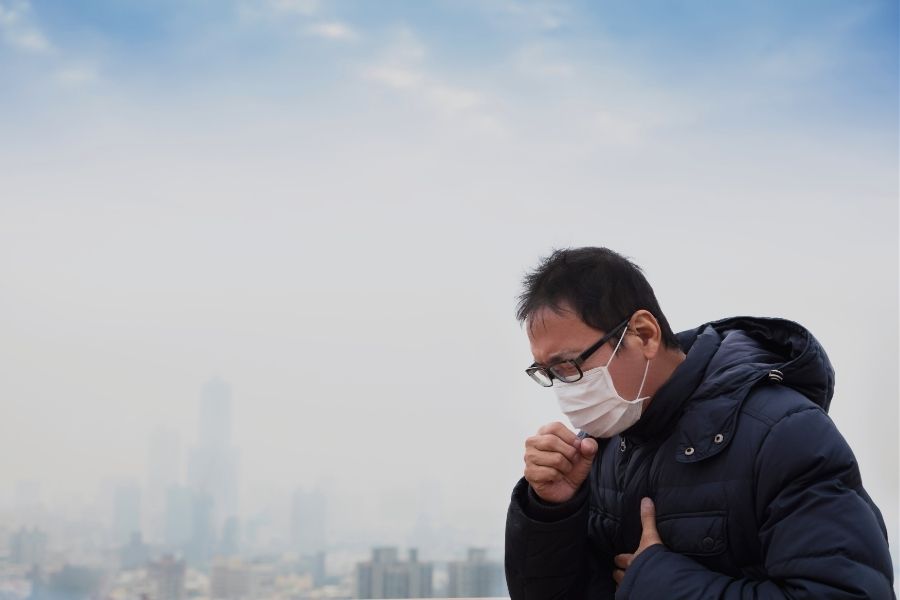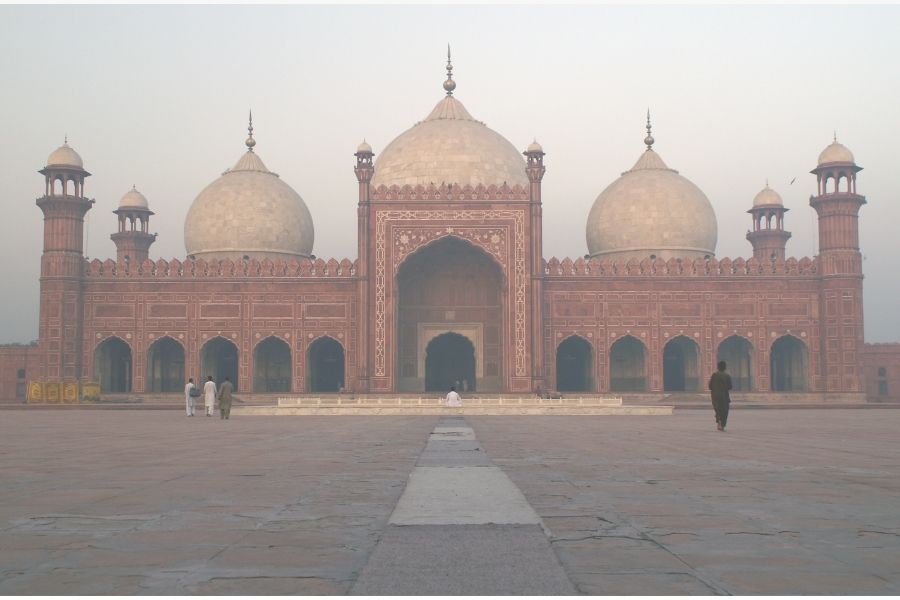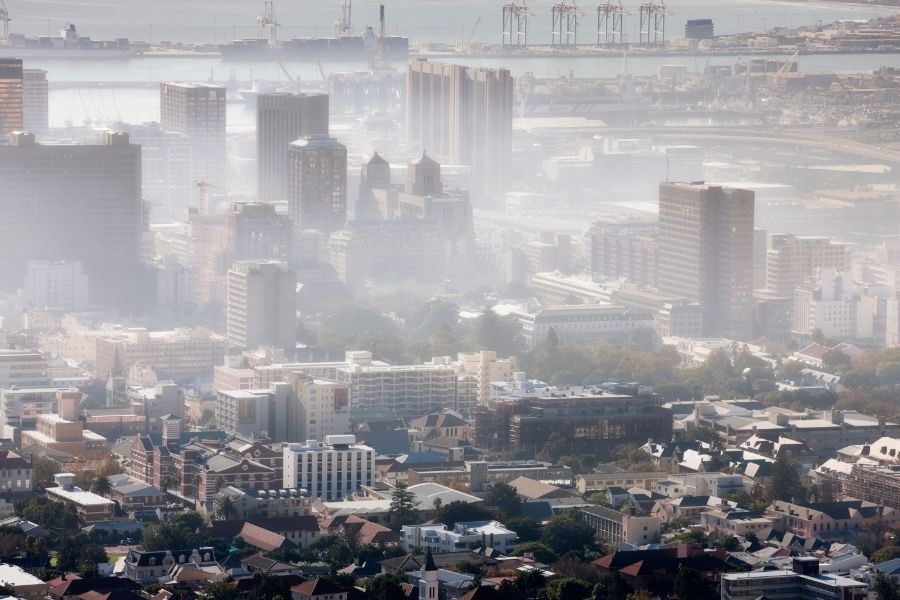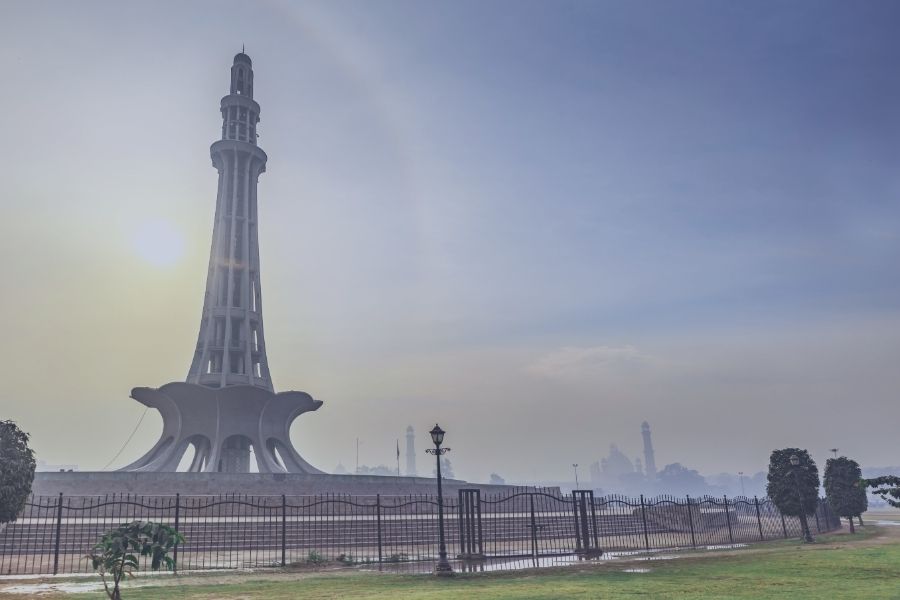Smog in Lahore: Today’s Update and Reasons for Smog Holidays
Understanding Smog and Its Formation
What is smog?
Smog is a thick haze of fog and smoke caused mainly by chemicals and particulate matter. Ground-level ozone, nitrogen oxides and sulfur dioxide are its components. The main cause of smog production is the condensation of the vapours from automobile and factory emissions in sunlight. Such a chemical reaction becomes stronger with some weather factors.
How Does Smog Form?
Smog formation may be traced to a method in which sunlight interacts with risky organic compounds (VOCs) and nitrogen oxides released from car exhaust, business emissions, and agricultural sports. In the presence of daylight, this pollution undergoes chemical reactions that bring about the advent of floor-stage ozone and other dangerous debris. The topographical and meteorological conditions in Lahore, including low wind speeds and temperature inversions, exacerbate pollution buildup, trapping them near the floor and forming a thick layer of smog.
Smog in Lahore Today: A Growing Crisis
Smog’s modern state of affairs in Lahore Lahore, the capital of Pakistan’s Punjab province, has witnessed a severe surge in smog degrees over the past decade, transforming into an environmental and public health disaster. During the colder months, mainly during November and February, Lahore’s Air Quality Index (AQI) continuously records degrees far exceeding the safe limits mounted via the Arena Fitness Company (WHO). The AQI regularly reaches dangerous tiers, with particulate count concentrations hovering well above the permissible 35 µg/m³ threshold for PM2.five.

The Smog in Lahore today is caused by emissions from the developing quantity of automobiles, brick kilns, and factories that function with the use of substandard fuels. The metropolis’s geographical place and the inflow of pollutants from nearby agricultural burning in the Indian country of Punjab in addition contribute to this trouble. This chronic layer of smog no longer best affects the air first-class. Additionally, it poses full-size threats to public fitness, inflicting respiratory diseases, cardiovascular headaches, and elevated health facility visits because of respiratory distress.
Smog Holidays: Why Lahore Needs Them
The idea of Smog Holidays In Lahore In reaction to the alarming degrees of air pollutants, the government of Punjab has brought “smog holidays,” an emergency measure aimed at minimising exposure to harmful pollution. A smog holiday in Lahore normally involves closing instructional establishments and agencies to protect students and employees from health dangers. The number one goal is to lessen vehicular motion and industrial activity during height smog periods, thereby reducing the amount of air pollutants emitted into the atmosphere.
Impact of Smog Holidays
While the statement of smog holidays can lead to decreased quick-term exposure for citizens, it isn’t a comprehensive approach to the disaster. The brief lower in emissions can also offer some alleviation, but it does not cope with the primary causes of smog formation. Consequently, while such measures are essential for the duration of intense pollution occasions, long-term techniques are critical to combat the difficulty efficiently.
Lahore High Court and Smog Interventions
The Smog Lahore High Court has been instrumental in imposing regulations associated with air pollution. Through a chain of smog directives, the court has driven the government to adopt more robust measures to manipulate the disaster. For instance, in cases where the AQI has reached seriously high tiers, the courtroom has mandated the closure of schools and ordered strict monitoring of commercial centers to minimise emissions. Those directives emphasise the importance of a coordinated effort among governmental bodies and environmental groups to implement anti-pollution rules effectively.
Reasons for the Smog Crisis in Punjab
An excellent sized issue contributing to smog in Punjab’s vicinity is the practice of crop residue burning. Farmers, especially in rural regions of Punjab, set fire to leftover stubble after the rice harvest to put together fields for the subsequent crop. This practice emits large amounts of particulate dependence and carbon monoxide, contributing to smog formation. Pass-border winds regularly bring these pollutants from Indian Punjab to Lahore, exacerbating the air first-class scenario.
Vehicular Emissions
Lahore’s rapid urbanisation has caused a sharp increase in the number of vehicles on the street. Older motors that do not follow emission standards release excessive quantities of nitrogen oxides and VOCs. The town’s public transportation system is additionally based closely on outdated buses and rickshaws, which use low-quality gas and contribute to the poor’s fair.
Industrial Pollution
Industries such as brick kilns and factories around Lahore regularly burn low-grade fuels, including coal and rubber, which emit toxic gases and particulate matter. Despite environmental guidelines, many business facilities continue to flout policies because of weak enforcement mechanisms. The cumulative effect of these emissions degrades the air quality in Lahore and neighbouring areas.
Climatic and Geographical Factors
The natural topography and weather of Lahore contribute to the severity of the smog problem. During wintry weather, temperature inversions occur while a layer of warm air traps pollutants close to the floor, preventing them from dispersing. This phenomenon results in a buildup of smog that may linger for days and cause sustained fitness impacts on residents.
Preventive Measures: How Can We Address Smog?
Adopting purifier electricity solutions A significant step in reducing smog ranges involves transitioning to purifier sources of electricity. This includes investing in renewable energy solutions, including sun and wind power, which do not emit dangerous pollution. The government can also incentivise the adoption of electrical motors (EVs) by offering subsidies and expanding charging infrastructure.
Implementing Stricter Emissions
Stricter rules for automobile and business emissions are critical for lowering air pollution. Implementing Euro 5 or higher emission standards, imposing heavy fines on non-compliant industries, and phasing out old automobiles are some strategies that can lead to purifier air. The advent of green technology in sectors can also help mitigate the emissions contributing to smog.
Public Awareness and Behavioral Changes
Educating the general public on the significance of pollution management measures can result in full-size behavioural adjustments. Recognition campaigns highlighting the health risks associated with smog, which include persistent respiration illnesses, can inspire people to adopt environmentally pleasant practices. These include using public transportation, carpooling, and avoiding useless car use.
Urban planning and Green spaces
Effective urban planning that includes green spaces can enhance air quality. Bushes and plants act as natural air filters by absorbing pollution and freeing oxygen. Growing the number of parks and green belts inside towns can help mitigate the effects of smog. Regulations that require building rooftops to have green gardens or vertical plant partitions can also contribute to cleaner air.
Community Initiatives and Support
Community-led tasks can play a pivotal role in fighting smog. Neighborhood businesses and environmental NGOs can work together to distribute masks, install air purifiers in public areas, and conduct tree plantation drives. Participating with instructional institutions to engage college students in pollution manipulation initiatives can foster a tradition of environmental obligation.
Governmental Action and Policy
Changes to long-term solutions to the smog crisis must include coverage-stage modifications. This includes stricter tracking of business practices, introducing low-sulfur fuels, and upgrading the public delivery system to reduce reliance on private vehicles. Legislative movements can also include a comprehensive ban on agricultural residue burning, with provisions for alternative waste control techniques.

Technological Advancements
Using technology to screen and forecast air exceptionally can assist in taking preemptive measures. Air nice monitoring stations prepared with real-time records evaluation abilities permit for timely alerts and responsive movement plans. Additionally, adopting technologies that capture pollution at their source, along with factory scrubbers and filters, can limit the quantity of harmful emissions released into the environment.
How can We Reduce and Stop Smog?
The answer to lowering smog includes a collective effort from the government and the public. People can take simple measures such as carpooling, decreasing electricity consumption to restrict power plant emissions, and warding off the open burning of waste. For an extended-time solution, revising city improvement plans, including pollutants, managing technologies, and implementing strict emission requirements is critical.
Legislative Support
A sturdy legislative framework is needed to support anti-smog projects. This entails passing legal guidelines that restrict industrial emissions, alter vehicle requirements, and promote the use of clean energy. Guidelines aimed at city afforestation and funding in public infrastructure are crucial for long-term impact.

International Collaboration
Smog isn’t limited to national borders, mainly in areas like Punjab, which shares environmental challenges with neighbouring international locations. Collaborative efforts between Pakistan and India, including information sharing and joint policy tasks, can more efficiently address the difficulty. Mastering from nations that have correctly tackled smog, including China, can also provide a roadmap for imposing a hit measure.
Conclusion:
The chronic smog disaster in Lahore, in addition to the broader location of Punjab, underscores the urgent need for comprehensive action. Smog holidays provide transient relief but highlight the importance of proactive measures, public participation, and stringent guidelines. By selling cleaner power, stricter emission rules, network initiatives, and sustainable city planning, Lahore can try to get closer to improved air excellence. Lengthy-term achievement will depend upon the determination of government, cooperation from the public, and a dedication to environmental stewardship for a healthier, more transparent future.
FAQs:
What is smog?
Smog is a form of severe air pollution due to a combination of smoke, fog, and chemical pollutants. It is typically bureaucracy while emissions from motors, factories, and different sources react with daylight, creating a dense, hazy layer of air pollution.
How is Smog Formed?
Smog forms when pollutants like nitrogen oxides (NOx) and unstable organic compounds (VOCs) released by vehicles, business procedures, and other sources react with daylight. This reaction produces floor-degree ozone and particulate matter, which combine to create smog.
How Can We Stop Smog?
Stopping smog entails proactive measures, which include:
- Decreasing the use of non-public cars by using public delivery, carpooling, or cycling.
- Making sure cars are well-maintained to lessen emissions.
- Selling and the use of renewable electricity assets in preference to fossil fuels.
- Supporting stricter rules on commercial emissions and adopting cleaner technologies.
- Planting trees and maintaining green areas as they assist in clearing out pollutants from the air.
How Can We Reduce Smog?
- Restriction driving and choosing on foot or cycling for brief distances
- Use energy-green home equipment and practices to reduce energy plant emissions.
- Avoid burning trash or backyard waste because it releases environmental pollution.
- Advocate for easy power policies and invest in solar, wind, or other renewable strength sources.
- Support urban greening initiatives that boost the number of vegetation and trees in towns.
How Can We Prevent Smog?
- Coordinated international and nearby efforts to display and manage emissions.
- Public schooling on the significance of decreasing emissions and following high-quality air pointers.
- Stronger government regulations centred on lowering business and vehicular emissions.
- Encouraging the usage of electric or hybrid cars.
- Decreasing indoor air pollutants via air purifiers and right airflow.

